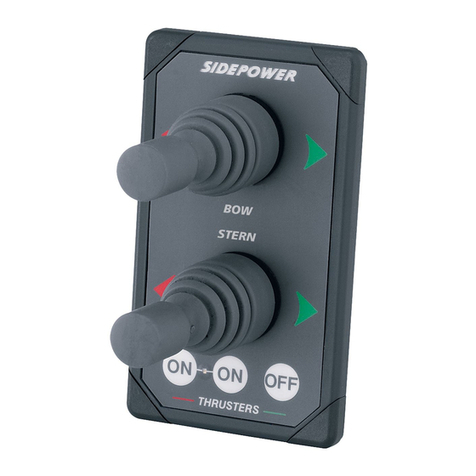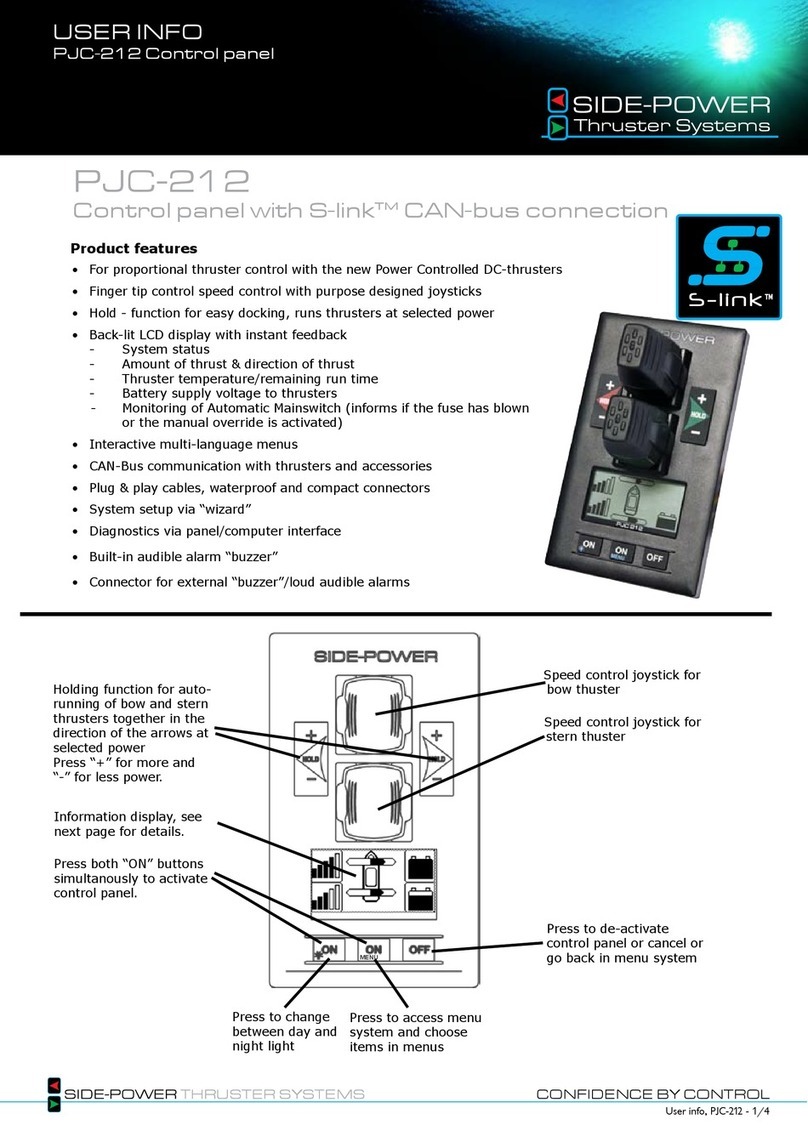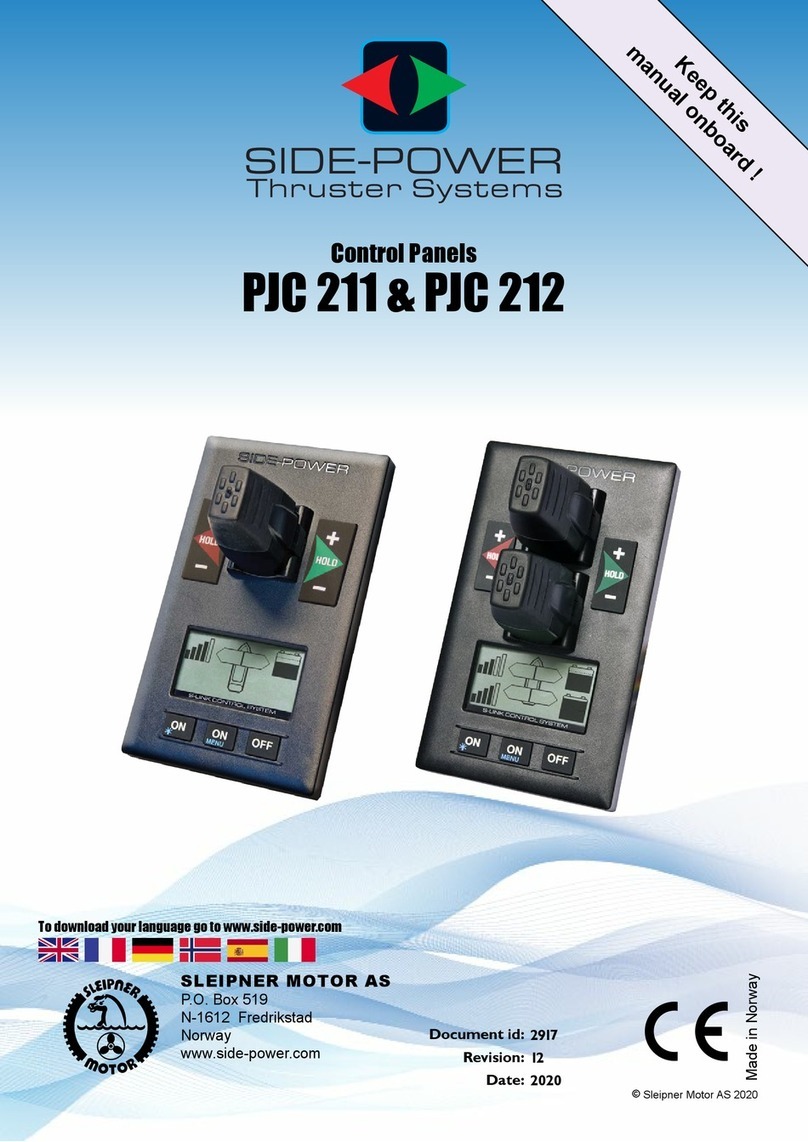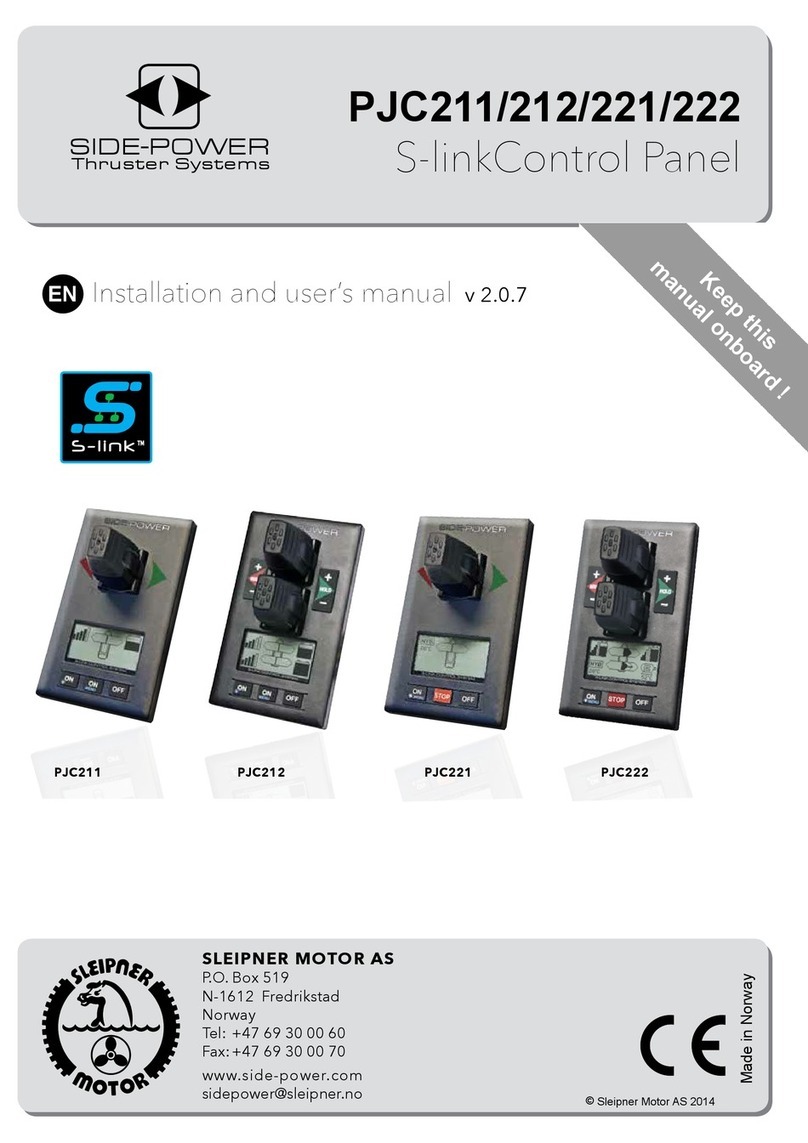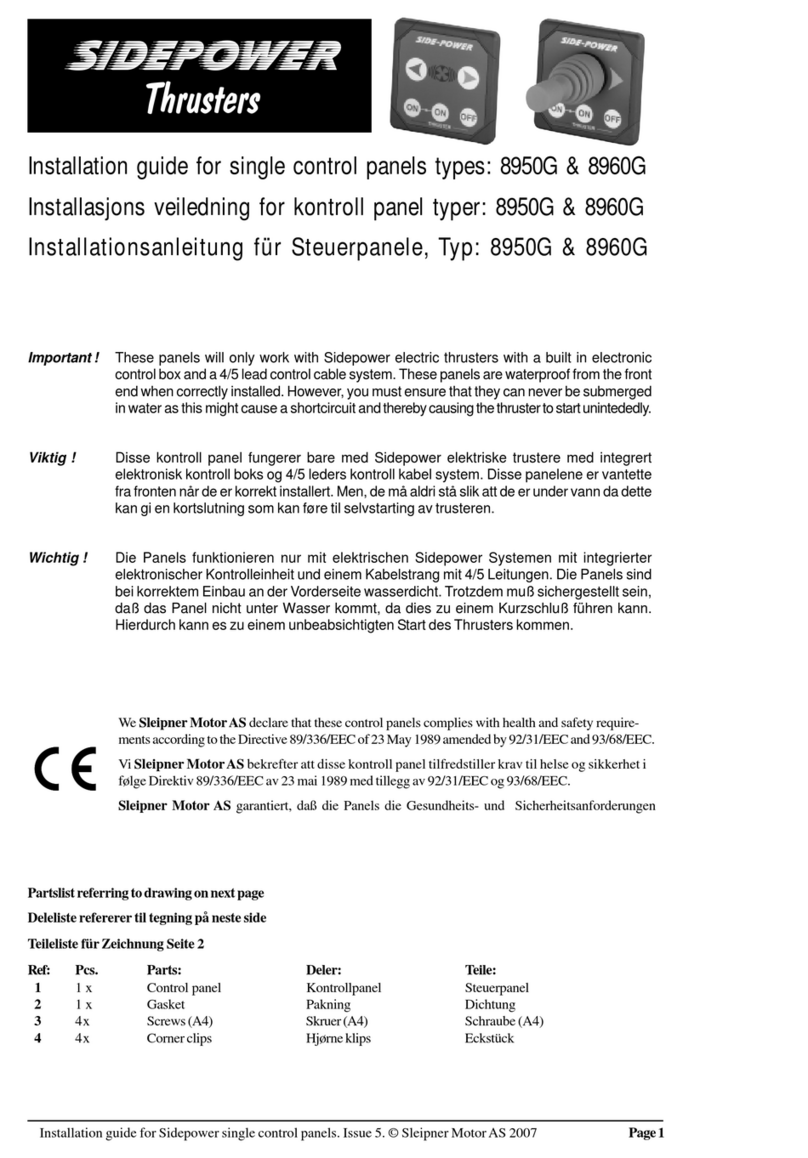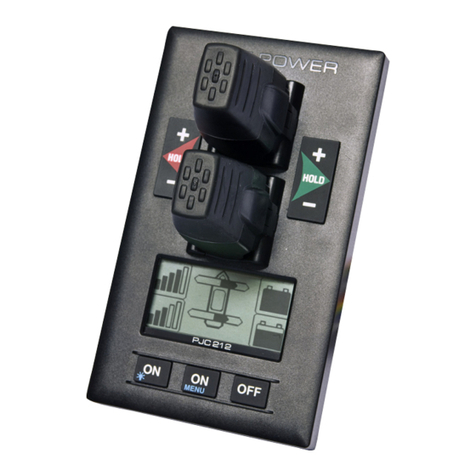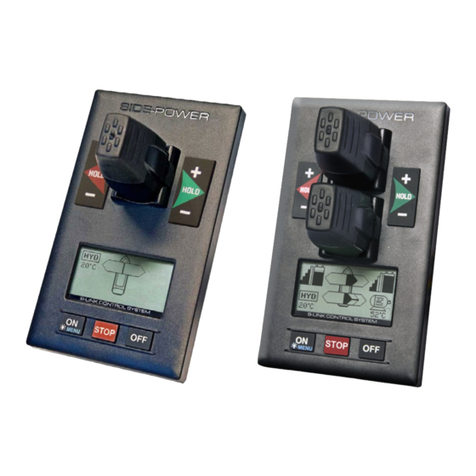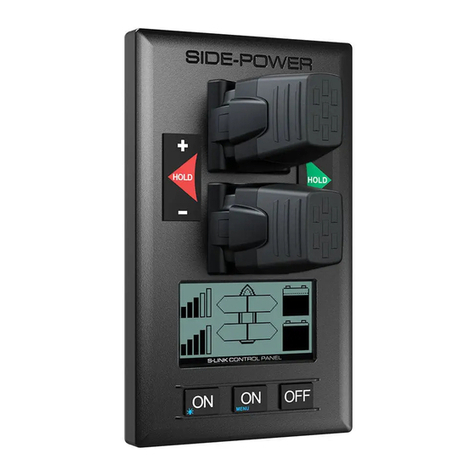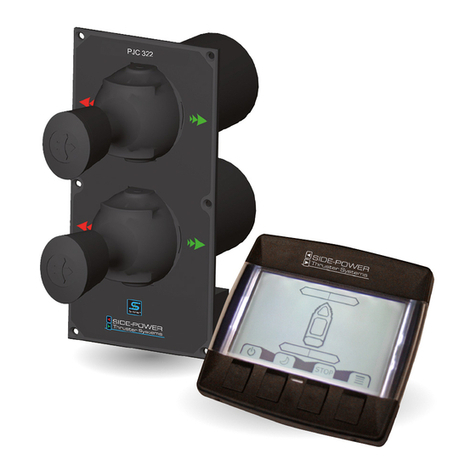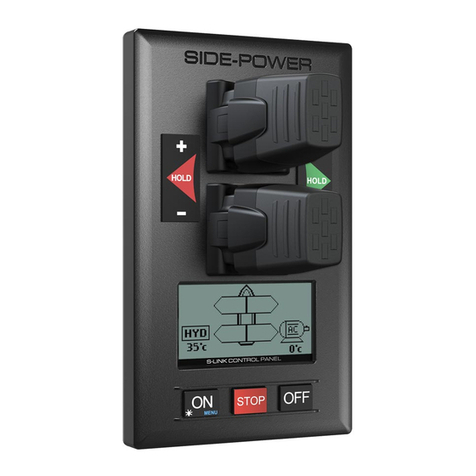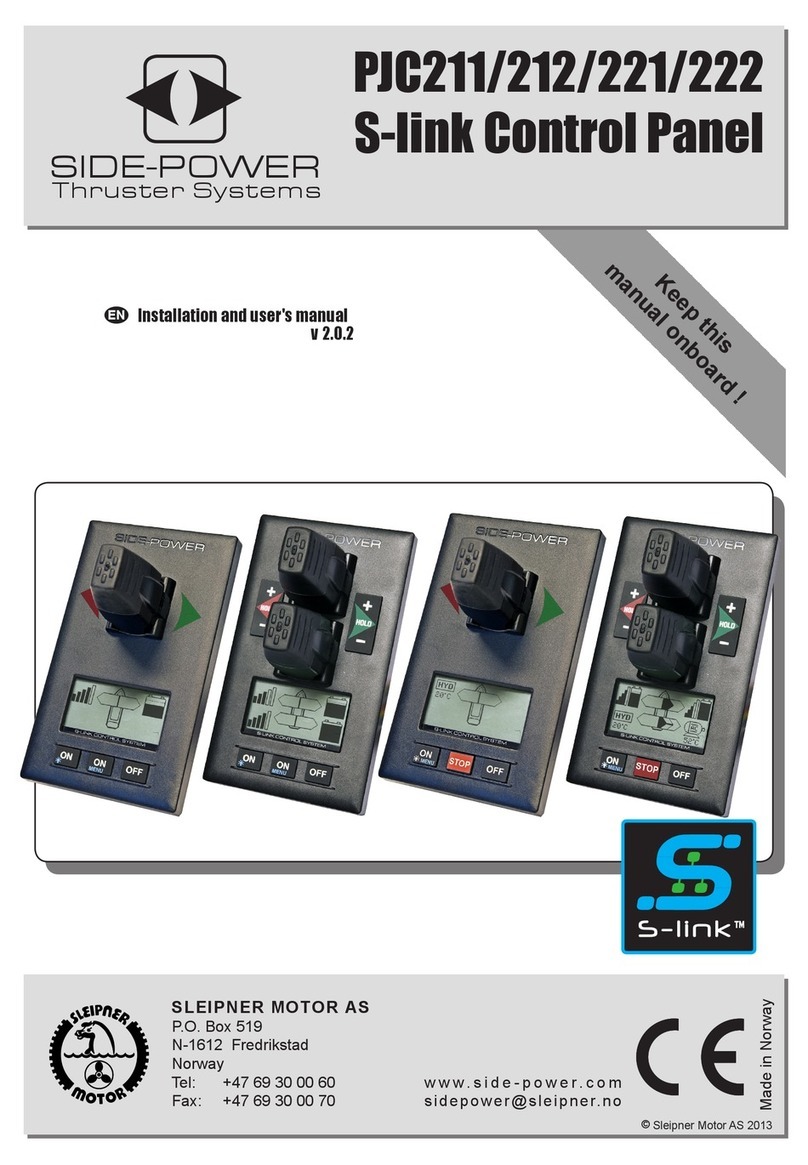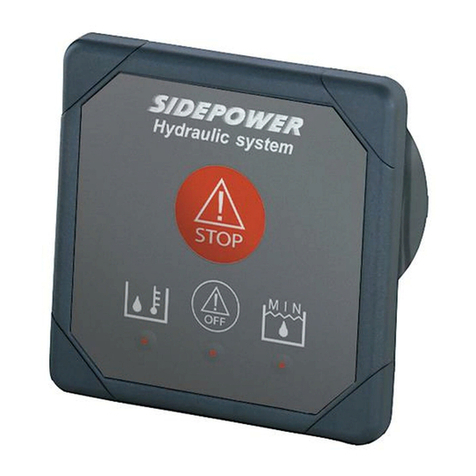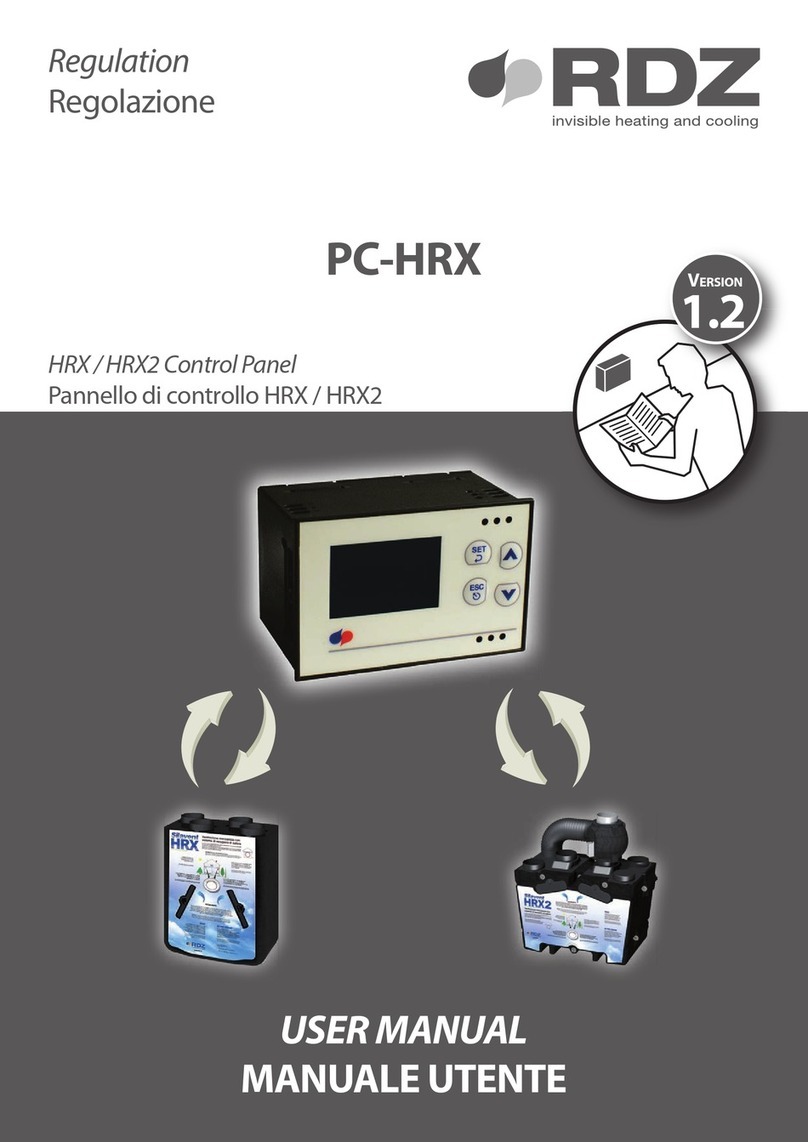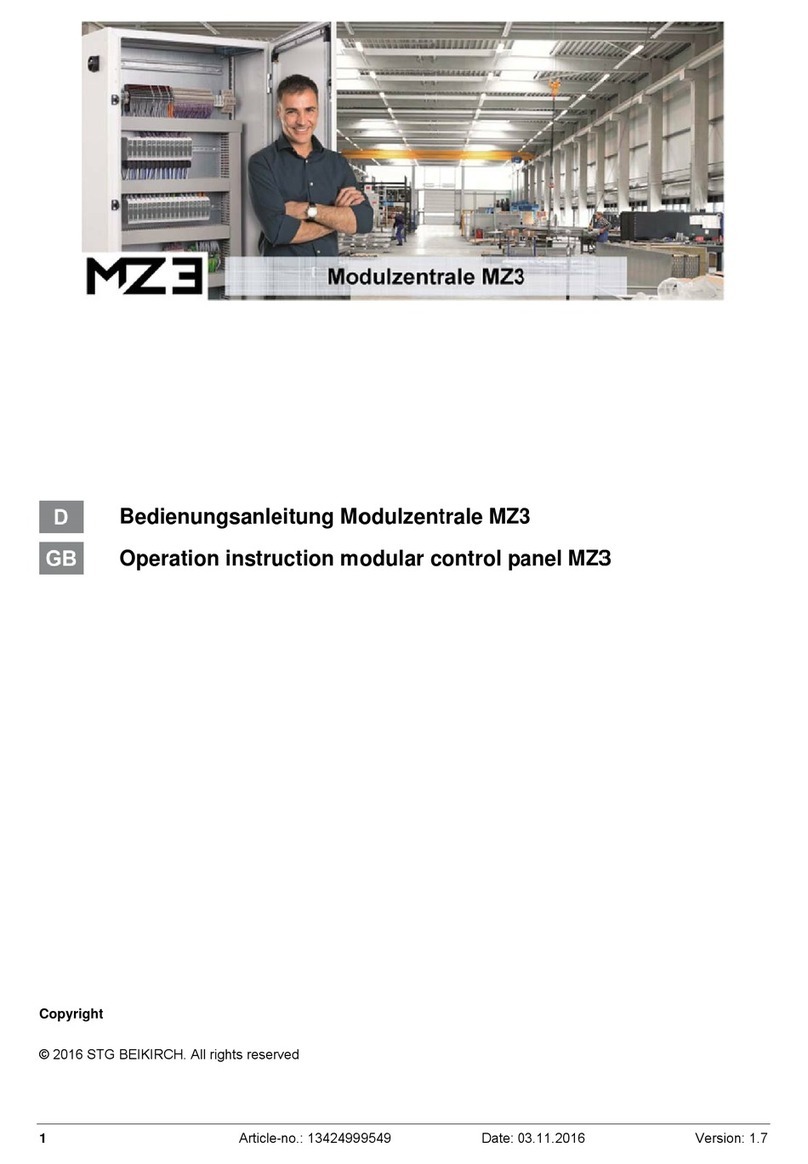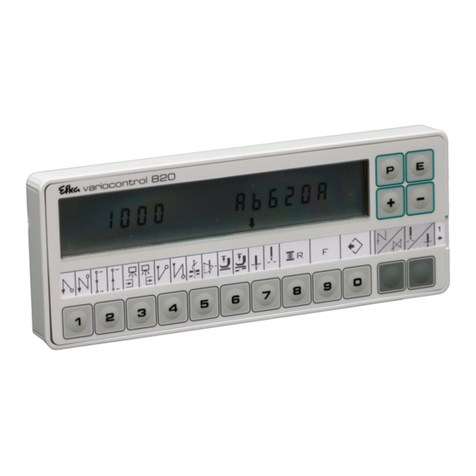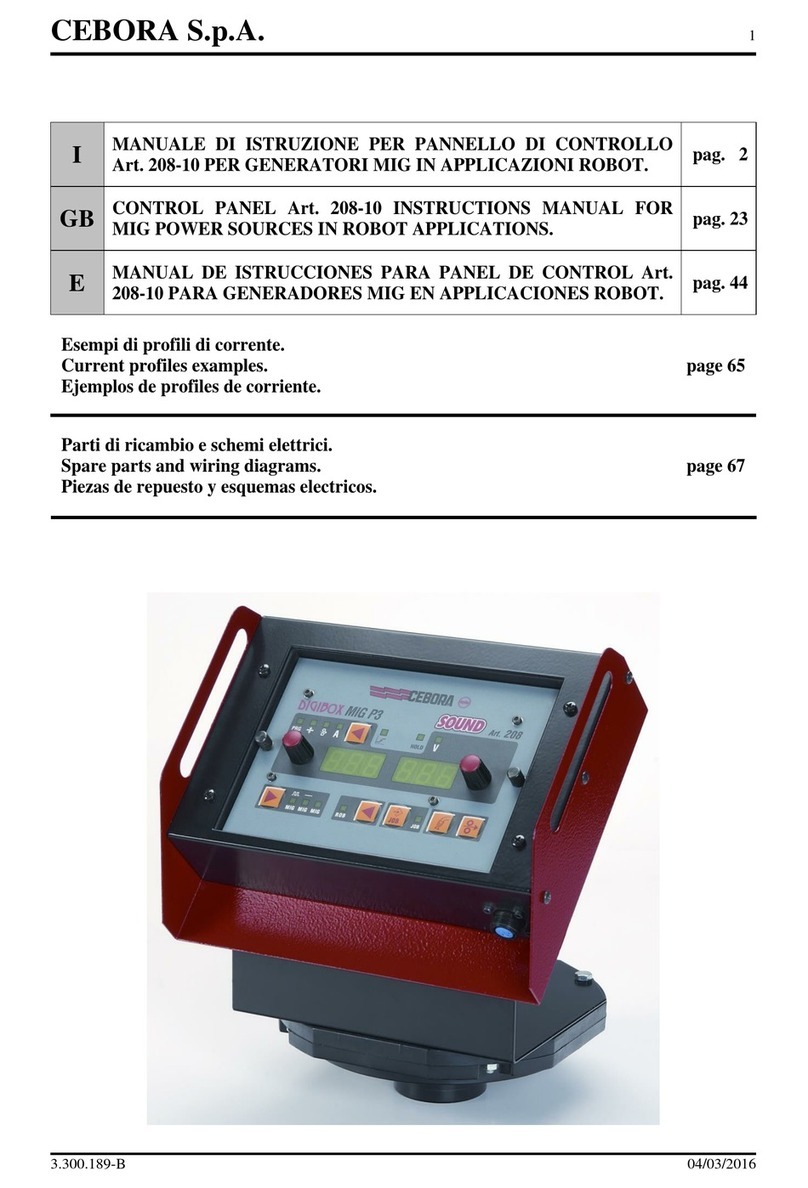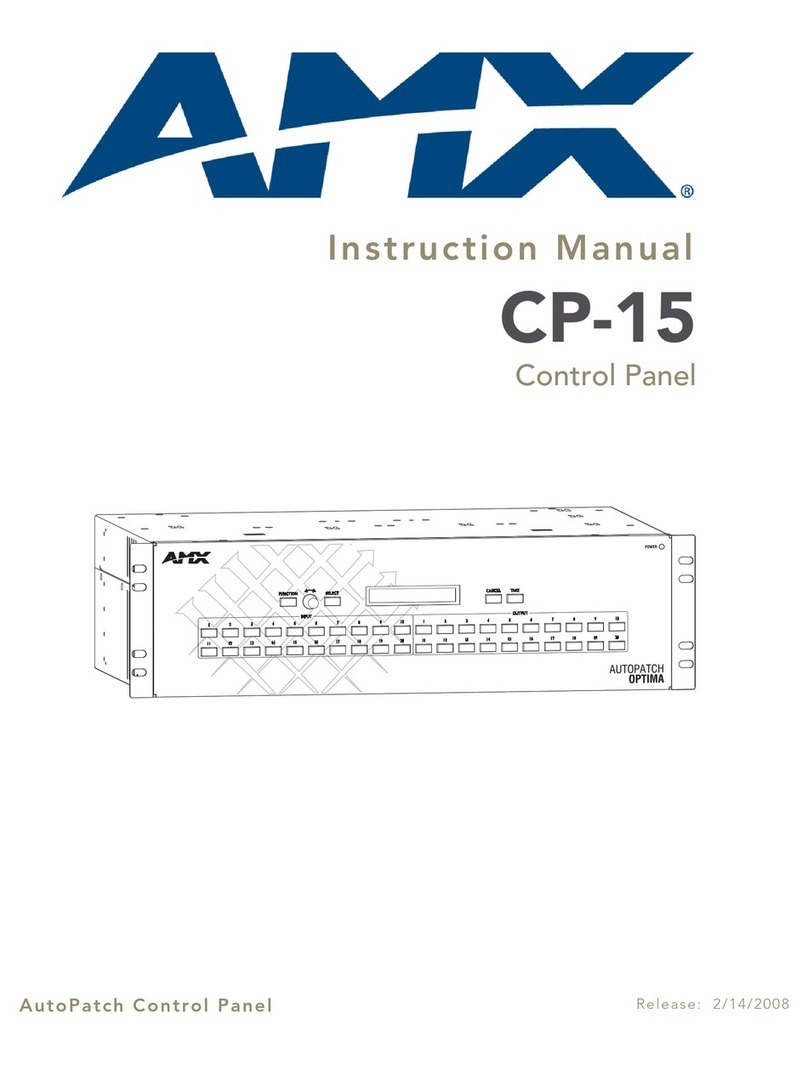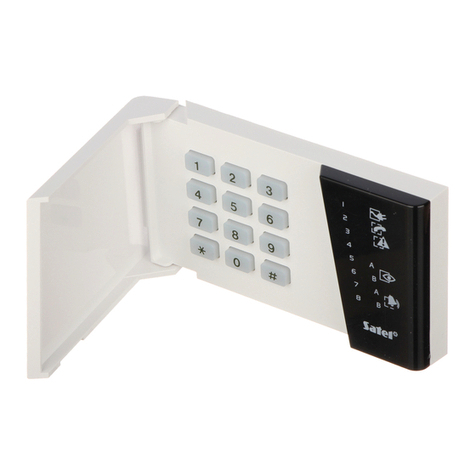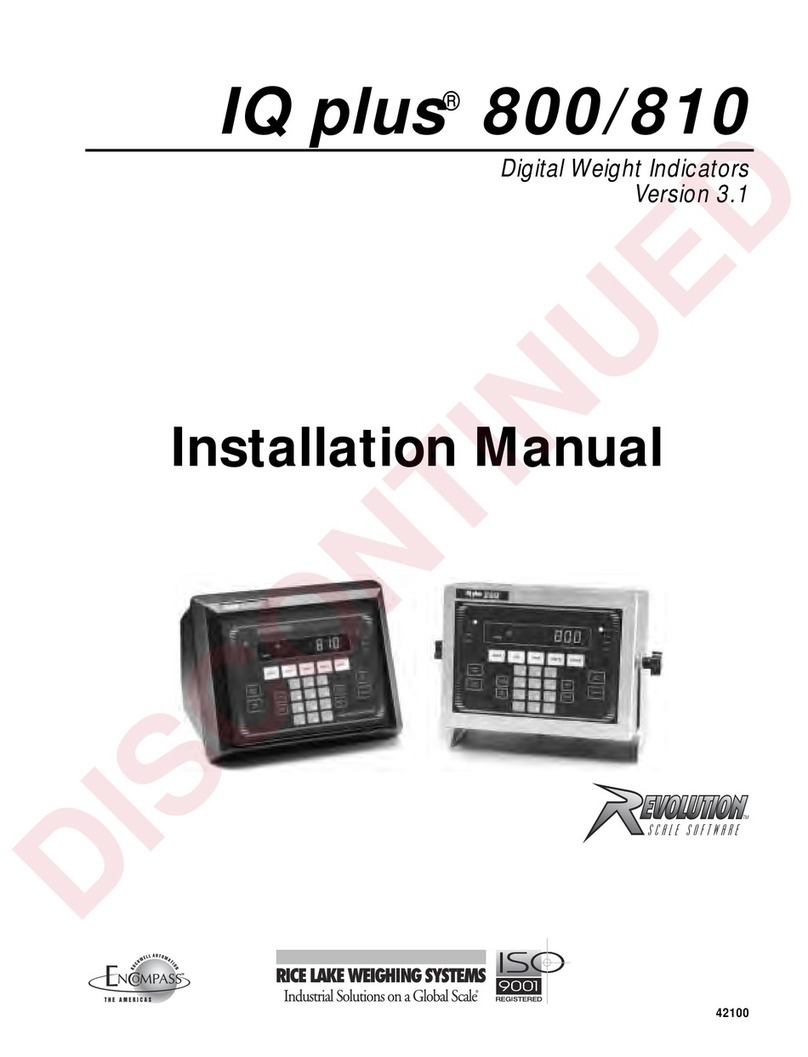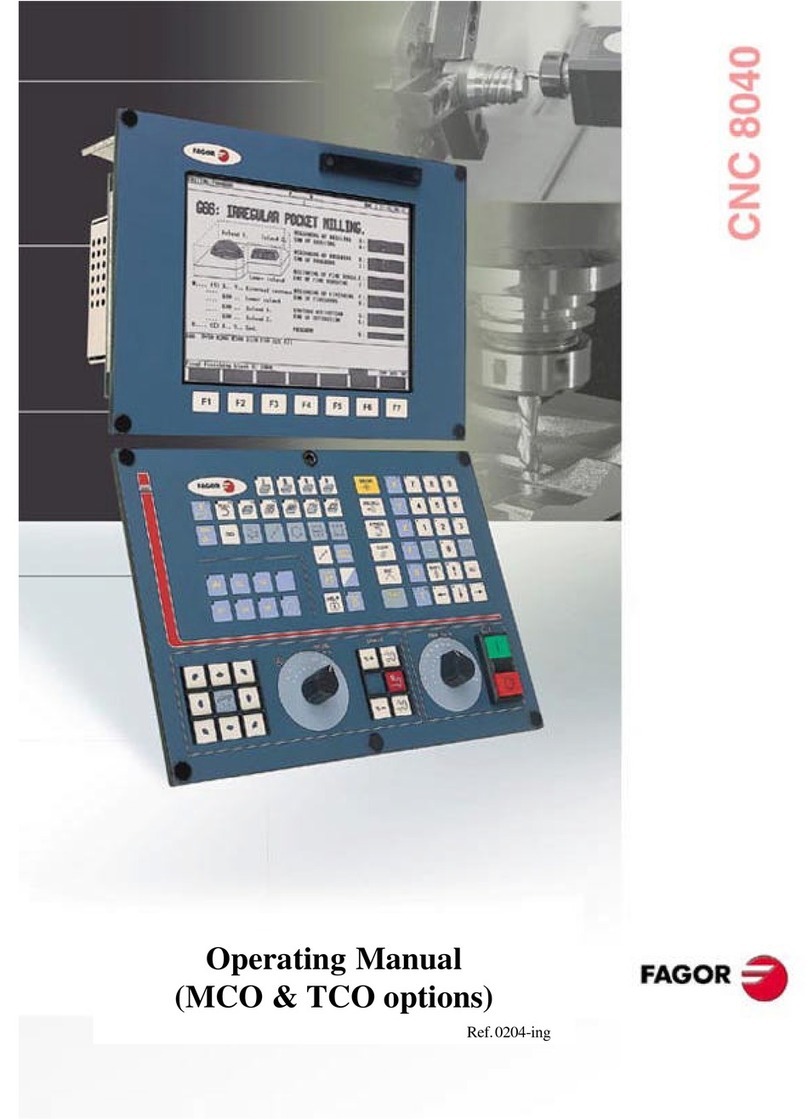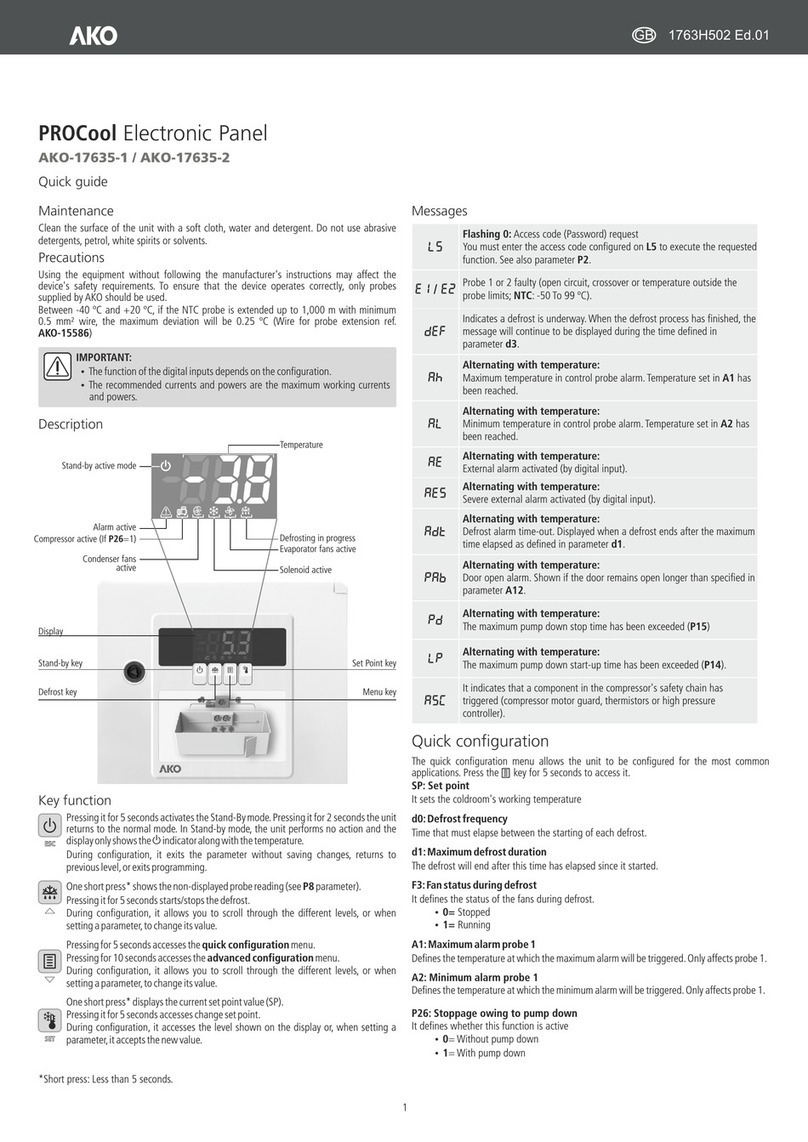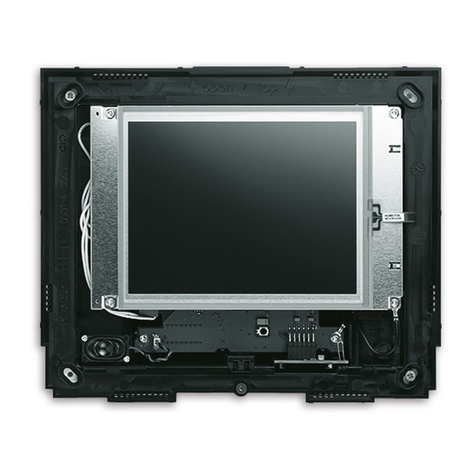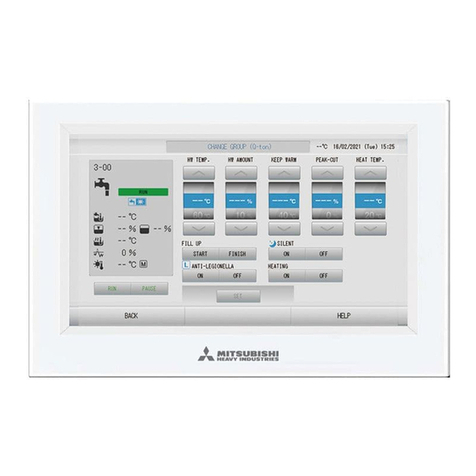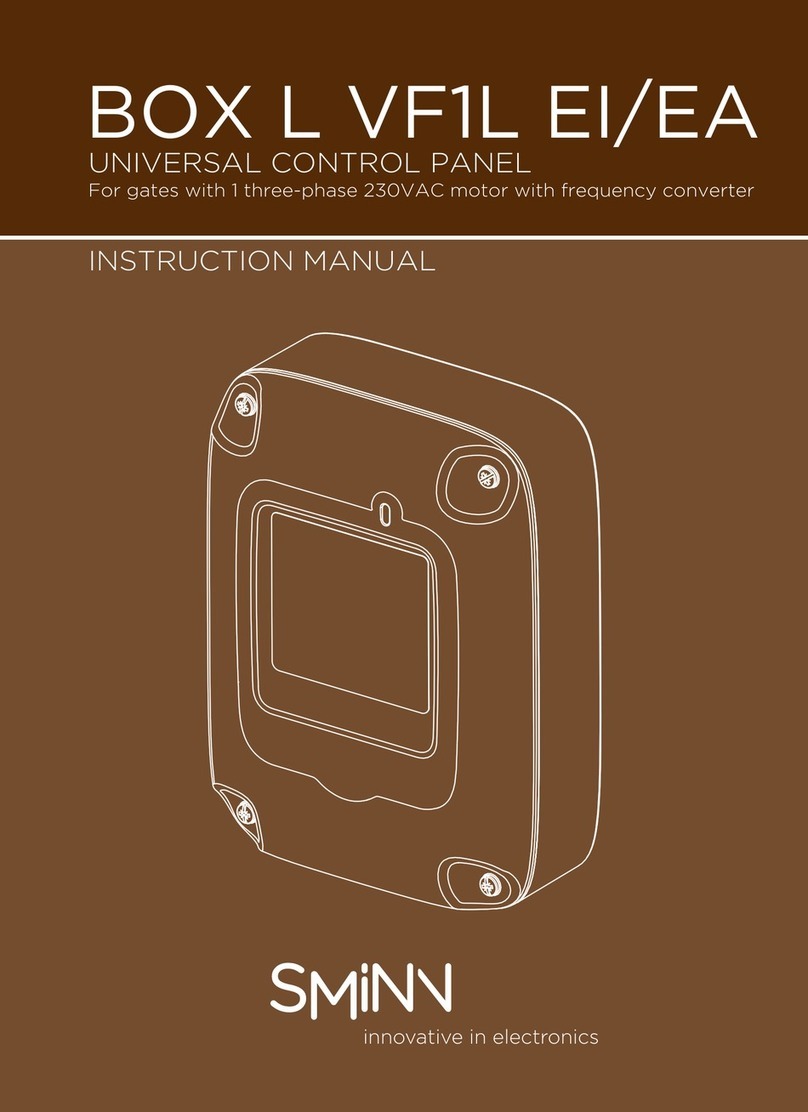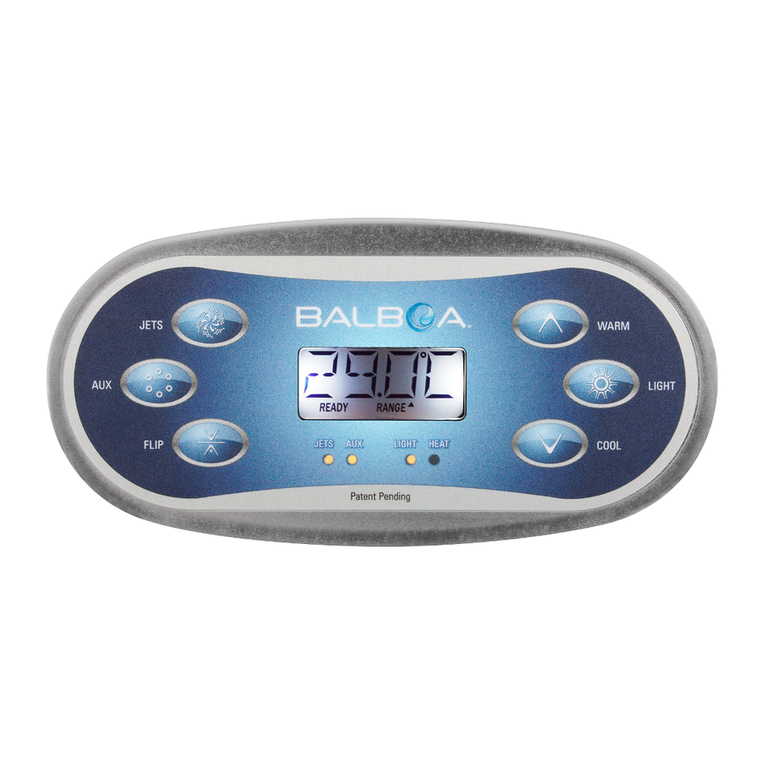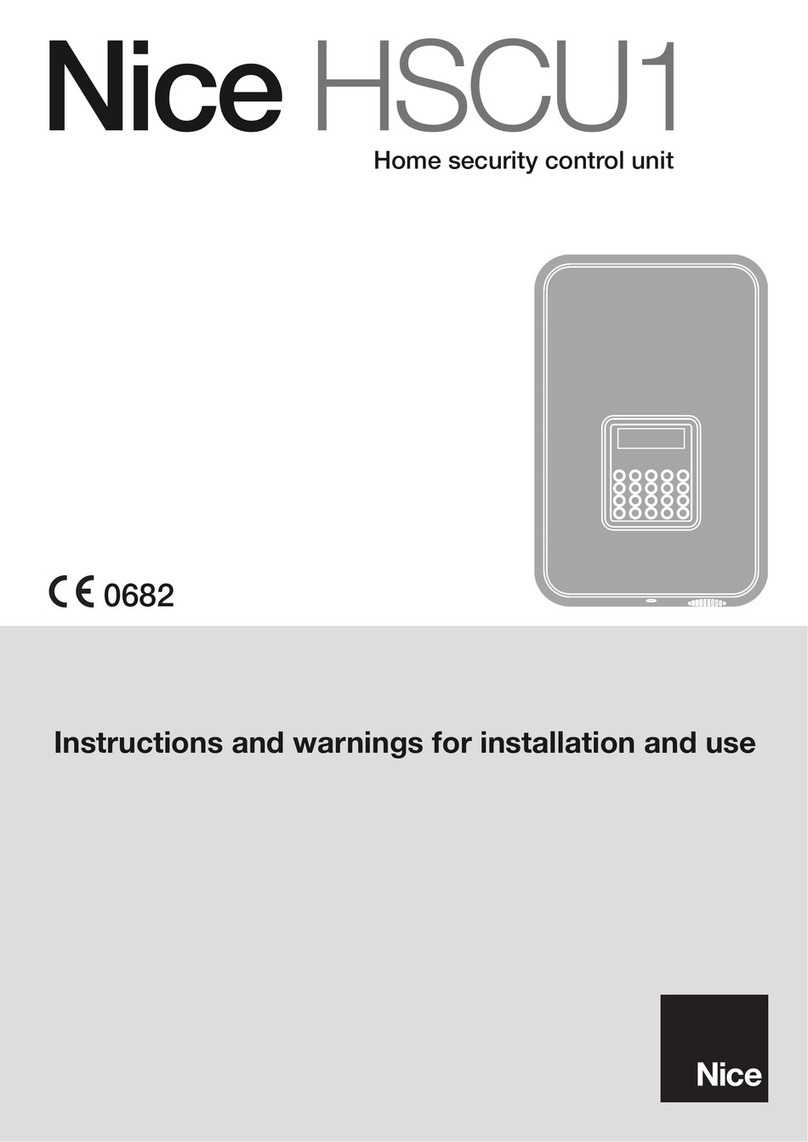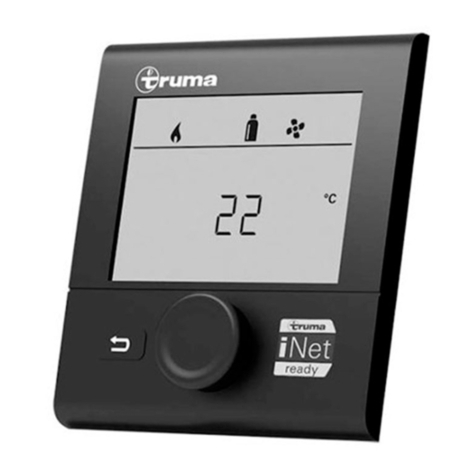
10 Stabilizer Operation and User guide version 5288-2 - 2018
Alarms and System monitoring
Fault Code Description Cause Action Boat handling
100.0.0 System Error - - Internal Error -Consult Side-Power dealer L2
NMEA2000 Transmission
No NMEA2000 (pgn127493)
transmission message received for
-Check if GW-1 status is ok
by checking the GW-1 status
LED (See GW-1 user
manual).
Device CPU Temp - Level
CPU temperature higher than 85
-Ventilate the room were the
ECU is sitting.
-Consult Side-Power dealer
35000.0.200 GPS signal lost - Timeout
No GPS data from GW-1 received for 3
-Check if GW-1 status is ok
by checking the GW-1 status
LED (See GW-1 user
manual).
SCU Sensor board fault 1 -
INIT FAIL
Sensor board fault. -Consult Side-Power dealer L2
SCU Sensor board fault 1 -
READ FAIL
Sensor board fault. -Consult Side-Power dealer L2
SCU Sensor board fault 2 -
INIT FAIL
Sensor board fault. -Consult Side-Power dealer L2
SCU Sensor board fault 2 -
READ FAIL
Sensor board fault. -Consult Side-Power dealer L2
SCU Sensor board fault 3 -
INIT FAIL
Sensor board fault. -Consult Side-Power dealer L2
SCU Sensor board fault 3 -
READ FAIL
Sensor board fault. -Consult Side-Power dealer L2
40004.0.24 PHC-3 - Fault Detected fault on PHC-3
-Check PHC-3 faults for more
information
L2
40004.0.100 PHC-3 - No Communication
PHC-3 Communication lost for more
-Check if PHC-3 is powered
and is working
L2
40004.0.200 PHC-3 - Timeout
PHC-3 startup timed out. Trigger when
startup takes longer than 60 seconds
-Check if PHC-3 is able to
build up the pressure.
-Check PHC-3 faults for more
information.
L2
PHC-3 - DEVICE IN MANUAL
Trigger when the SCU try to startup PHC-
3 and the PHC-3 is running in manual
-Stop running the PHC-3 in
L2
SCU Sensor board fault 4 -
Fault
Sensor board fault. -Consult Side-Power dealer L2
SCU Sensor board fault 4 -
ID Fault
Sensor board fault. -Consult Side-Power dealer L2
SCU Sensor board fault 4 -
Self-Test Fault
Sensor board fault. -Consult Side-Power dealer L2
SCU Sensor board fault 4 -
Not Calibrated
Sensor board fault. -Consult Side-Power dealer L2
SCU Sensor board fault 5 -
No Communication
Sensor board fault. -Consult Side-Power dealer L2
SCU Sensor board fault 5 -
ID Fault
Sensor board fault. -Consult Side-Power dealer L2
SCU Sensor board fault 6 -
Fault
Sensor board fault. -Consult Side-Power dealer L2
SCU Sensor board fault 7 -
ID Fault
Sensor board fault. -Consult Side-Power dealer L2
SCU Sensor board fault 7 -
Self-Test Fault
Sensor board fault. -Consult Side-Power dealer L2
SCU Sensor board fault 8 -
ID Fault
Sensor board fault. -Consult Side-Power dealer L2
SCU Sensor board fault 11 -
ID Fault
Sensor board fault. -Consult Side-Power dealer L2
FCU Current Fin bow port
Current to the FCU is too high. Trigger
-Check cabling between SCU
and FCU for short circuit.
L2
FCU Current Fin bow
Current to the FCU is too high. Trigger
-Check cabling between SCU
and FCU for short circuit.
L2
FCU Current Fin stern port
Current to the FCU is too high. Trigger
-Check cabling between SCU
and FCU for short circuit.
L2
FCU Current Fin stern
Current to the FCU is too high. Trigger
-Check cabling between SCU
and FCU for short circuit.
